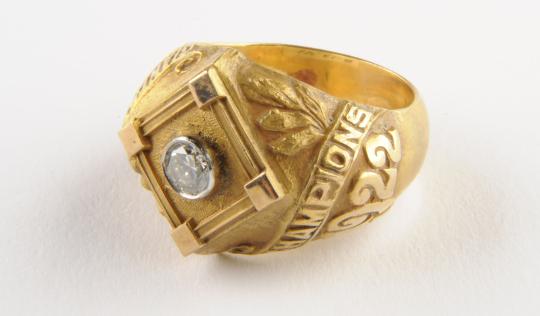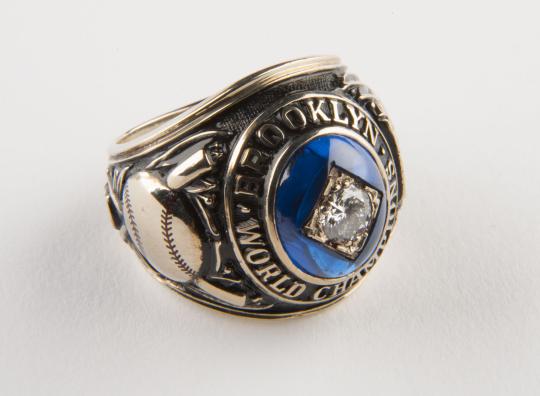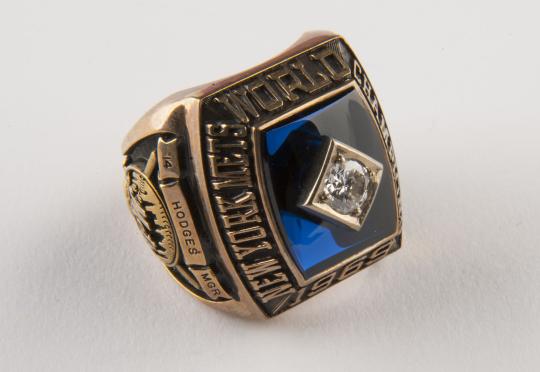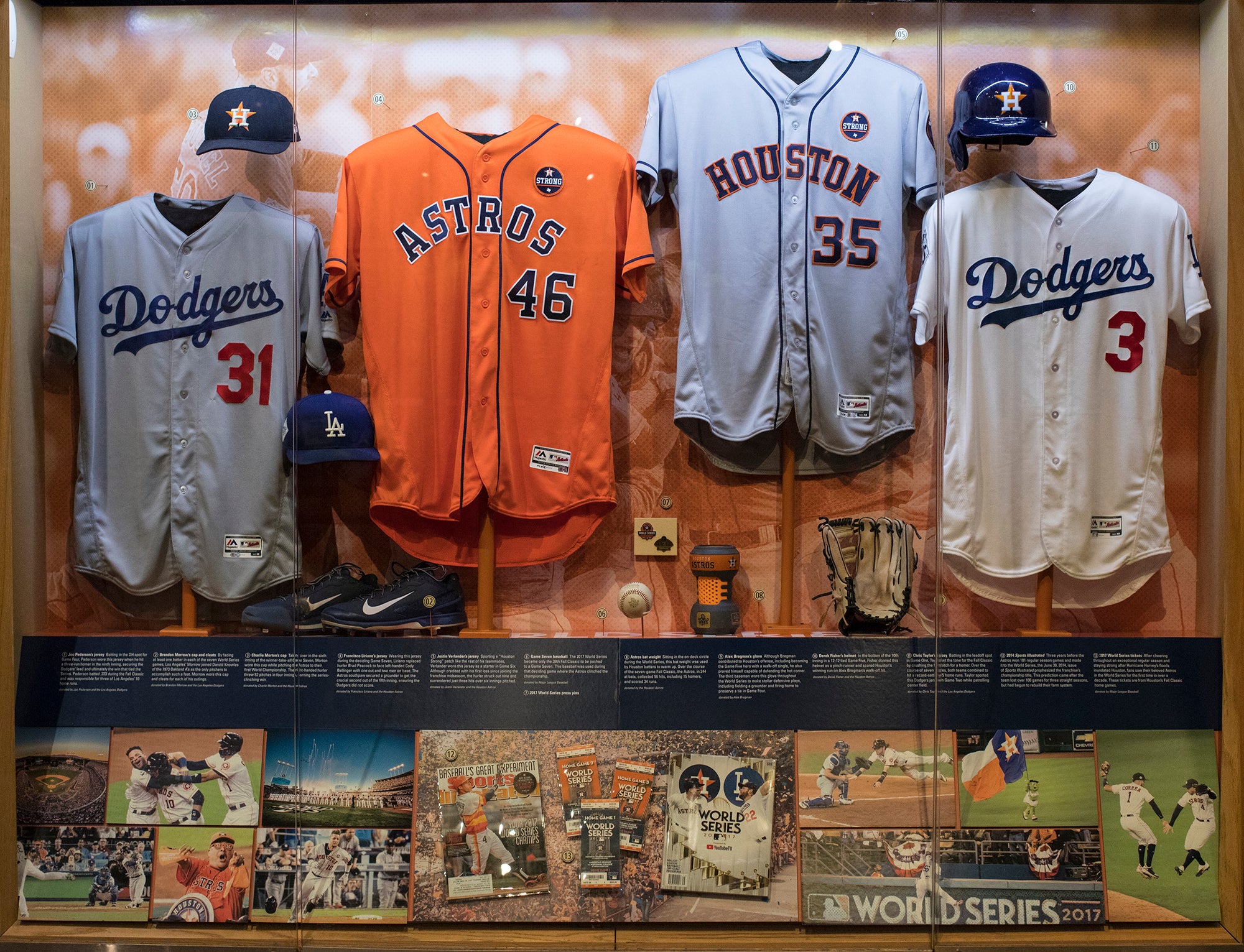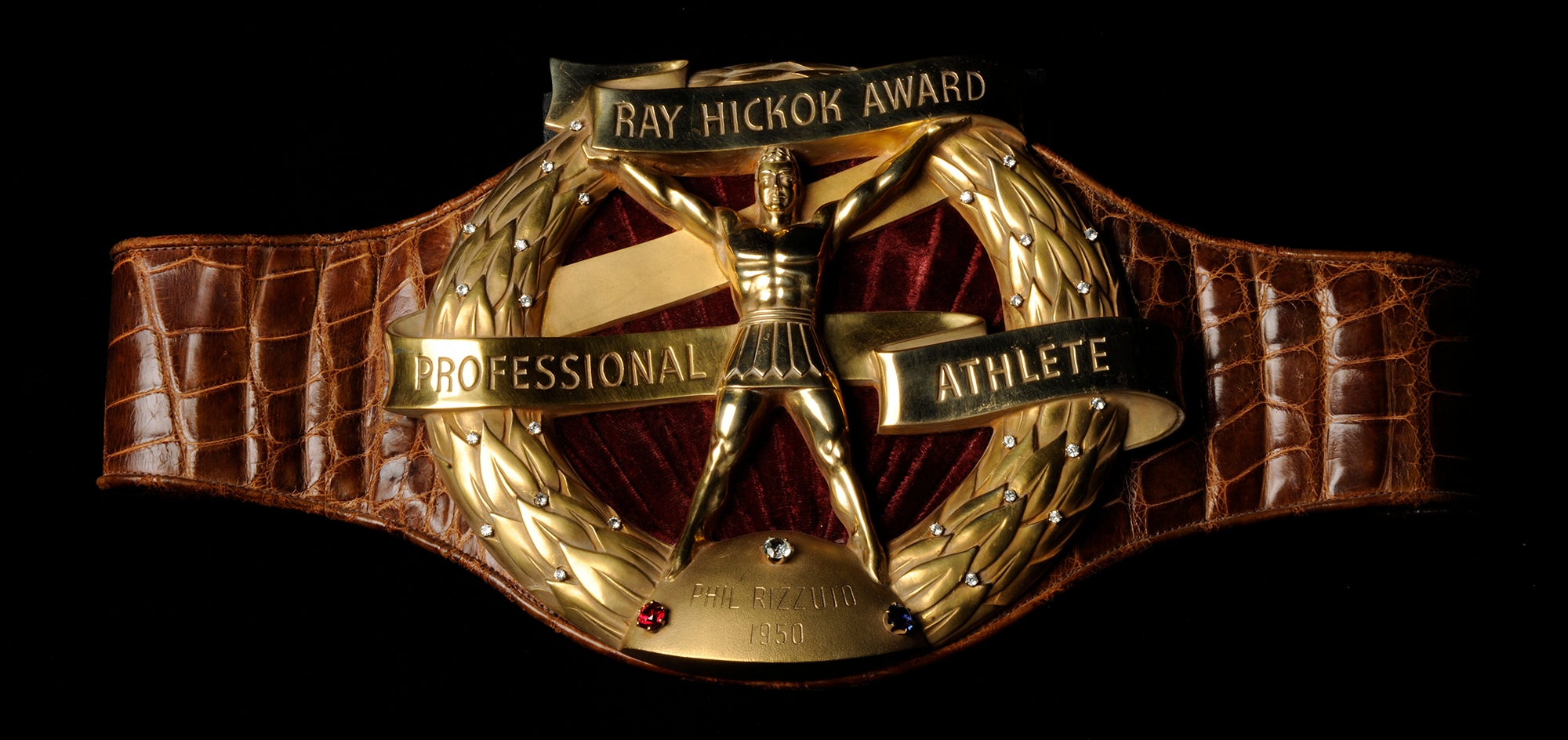- Home
- Our Stories
- Rings tell story of baseball’s greatest teams
Rings tell story of baseball’s greatest teams
The sentiment has been expressed for decades. But maybe never as succinctly as future Hall of Famer Gary Carter in 1986.
“The only thing on my mind now,” Carter said, “is getting that World Series ring.”
Taken literally, Carter seemed oddly excited for a single piece of jewelry, but he wasn’t just referring to a bejeweled metal band. A World Series ring, the individual player’s trophy for his team’s accomplishments on the field, is a glittering reflection of baseball championships past and present. The Hall of Fame’s collection of World Series jewelry allows visitors to explore the evolution of the ring throughout the years, from glamorous accessory to synonym for victory.
Beginning in 1903, World Series winners often received lapel pins, engraved pocket watches or watch fobs as tokens to commemorate their championship. The earliest such award was given by a local business when the Boston Globe sponsored watch fobs for the victorious 1903 Boston Americans (now known as the Red Sox). Subsequent awards were given by the National Commission, the administrative head of baseball prior to the game’s first Commissioner. The National Commission issued lapel pins embedded with a diamond, creating functional trophies players could wear to display their victory.
The first World Series rings were presented to the 1922 New York Giants the spring following their defeat of the New York Yankees. According to The New York Times, the Giants selected rings over other awards like the previous years’ watch fobs and medals. The 14-karat gold rings contained a single diamond jewel in the center of a baseball diamond, flanked by crossed bats, a ball, glove, and laurel leaves with the words “Giants World Champions 1922” sweeping across the sides.
In many ways, this design became the basis for the next 50 years of rings: A gold band with a central diamond set either in gold or a field of semi-precious stone, with “World Champions,” the club name, the year, and team motifs engraved along the sides.
The first World Series rings were issued to the 1922 New York Giants. (Milo Stewart Jr./National Baseball Hall of Fame and Museum)
Share this image:
The use of rings for championship awards did not catch on immediately: The next three champions chose pocket watches or other jewelry. But in 1926, the St. Louis Cardinals defeated the Yankees in the Fall Classic and became the first to include their team’s symbol in the design of their ring. A variety of awards continued to be presented until 1931 when the Cardinals won again, introducing color to the ring design with a ruby field beneath their diamond. From then on, it became tradition for every team that won the Fall Classic to receive a ring.
A club’s logo didn’t appear as the central design on the top of a ring until following the 1973 season. That year, the Oakland A’s placed a gold inlay of their “A’s” logo atop their ring. Though the lack of a diamond may have disappointed players, the prominent logo appearing front and center became customary for future championship rings.
Four years later, the New York Yankees revolutionized the design of championship jewelry. After 20 very similar rings from their 21 titles, the 1977 Yankees rejected the single stone in favor of the famed “NY” logo created using an unprecedented 19 diamonds atop a blue stone field.
The Yankees 1977 ring ushered in a new “bling” era. The next season’s Yankees victory ring contained 21 diamonds. From 1977 to the present day, only two teams reverted to the original single-diamond design: the 1981 Los Angeles Dodgers and 1982 St. Louis Cardinals. The trend reached its peak in 2003 when the Florida Marlins presented the most bejeweled ring in World Series history: a 3.5 ounce, 14-karat white gold ring encrusted with 229 diamonds, including a rare teal diamond and thirteen rubies. While subsequent champions have toned down the “bling,” their rings are no less opulent.
Major League Baseball contributes about $1,500 toward a ring for each player, coach, manager and general manager on the winning team. Clubs are allowed to make rings costing in excess of this amount and in greater quantity but additional expenses must come from their own budget. They work closely with jewelry companies like Balfour, Jostens, and Tiffany & Co. to design and create a ring that best represents the club and its season. These designs are closely guarded until they are awarded early the following season. Many teams in recent years have created smaller and less expensive designs to gift to some non-player personnel.
While rings are prized by their owners, ironically, their size and value has created new challenges. Some players lament the inability to wear the often unwieldy bling, with their large size and weight making them uncomfortable, and their value making them unsafe to wear for long periods of time. Many players keep their rings in safe deposit boxes in banks or safes in their homes. In order to have a wearable ring, some players will also buy the lower-tier rings, which are more comfortable and less risky to wear in public.
The rings, valued by player and fan alike for representing the hardest-won victory in baseball, have increased the drive for the athletes pursuing them in the first place. Even today, “getting a ring” is synonymous with winning a championship, athletic greatness and achieving a hallowed place in sports history.
Amid all the majestic exhibits at the Hall of Fame, the glittering display of rings in the Museum’s Autumn Glory exhibit draws visitors to marvel over the jewels and remember the past moments of victory. The Hall of Fame’s collection of World Series jewelry includes nearly 140 years of medals, watches, fobs, pins, and rings.
Some examples of World Series rings in the Hall of Fame’s collection include (from left): 1940 Cincinnati Reds, 1973 Oakland A’s, 2003 Florida Marlins, 1985 Kansas City Royals and 1948 Cleveland Indians. The Hall of Fame collection includes a version of each World Series ring dating back to 1922, when the tradition began. (Milo Stewart Jr./National Baseball Hall of Fame and Museum)
Share this image:
Peyton Tracy was the registrar at the National Baseball Hall of Fame and Museum

